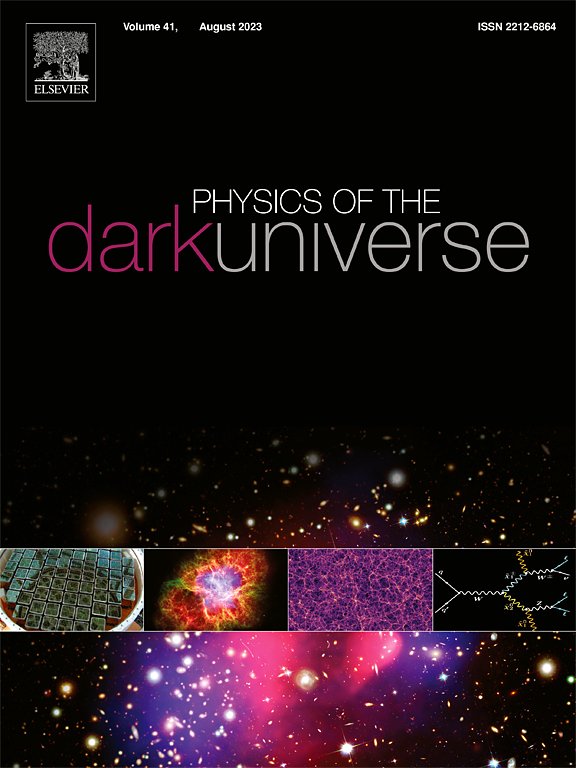Gravitational waves dynamics with Higgs portal and U(1) x SU(2) interactions
IF 5
2区 物理与天体物理
Q1 ASTRONOMY & ASTROPHYSICS
引用次数: 0
Abstract
Finding the origins of the primordial Gravitational Waves (GWs) background by the near-future Cosmic Microwave Background (CMB) polarization experiments is expected to open a new window Beyond the Standard Model (BSM) of particle physics, allowing to investigate the possible connections between the Electroweak (EW) symmetry breaking scale and the energy scale of inflation. We investigate the GWs dynamics in a set-up where the inflation sector is represented by a mixture of the SM Higgs boson and an U(1) scalar singlet field non-minimally coupled to gravity and a spectator sector represented by an U(1) axion and a SU(2) non-Abelian gauge field, assuming that there is no coupling, up to gravitational interactions, between inflation and spectator sectors.
We show that a mixture of Higgs boson with a heavy scalar singlet with large vacuum expectation value (vev) is a viable model of inflation that satisfy the existing observational data and the perturbativity constraints, avoiding in the same time the EW vacuum metastability as long as the Higgs portal interactions lead to positive tree-level threshold corrections for SM Higgs quartic coupling. We evaluate the impact of the Higgs quartic coupling threshold corrections on the GW sourced tensor modes while accounting for the consistency and backreaction constraints and show that the Higgs portal interactions enhance the GW signal sourced by the gauge field fluctuations in the CMB B-mode polarization power spectra.
We address the detectability of the GW sourced by the gauge field fluctuations in presence of Higgs portal interactions for the experimental configuration of the future CMB polarization LiteBird space mission. We find that the sourced GW tensor-to-scalar ratio in presence of Higgs portal interactions is enhanced to a level that overcomes the vacuum tensor-to-scalar ratio by a factor , much above the detection threshold of the LiteBird experiment, in agreement with the existing observational constraints on the curvature fluctuations and the allowed parameter space of Higgs portal interactions.
A large enhancement of the sourced GW can be also detected by experiments such as pulsar timing arrays and laser/atomic interferometers. Moreover, a significant Higgs–singlet mixing can be probed at LHC by the measurement of the production cross sections for Higgs-like states, while a significant tree level threshold correction of the Higgs quartic coupling can be measured at colliders by ATLAS and CMS experiments.
求助全文
约1分钟内获得全文
求助全文
来源期刊

Physics of the Dark Universe
ASTRONOMY & ASTROPHYSICS-
CiteScore
9.60
自引率
7.30%
发文量
118
审稿时长
61 days
期刊介绍:
Physics of the Dark Universe is an innovative online-only journal that offers rapid publication of peer-reviewed, original research articles considered of high scientific impact.
The journal is focused on the understanding of Dark Matter, Dark Energy, Early Universe, gravitational waves and neutrinos, covering all theoretical, experimental and phenomenological aspects.
 求助内容:
求助内容: 应助结果提醒方式:
应助结果提醒方式:


